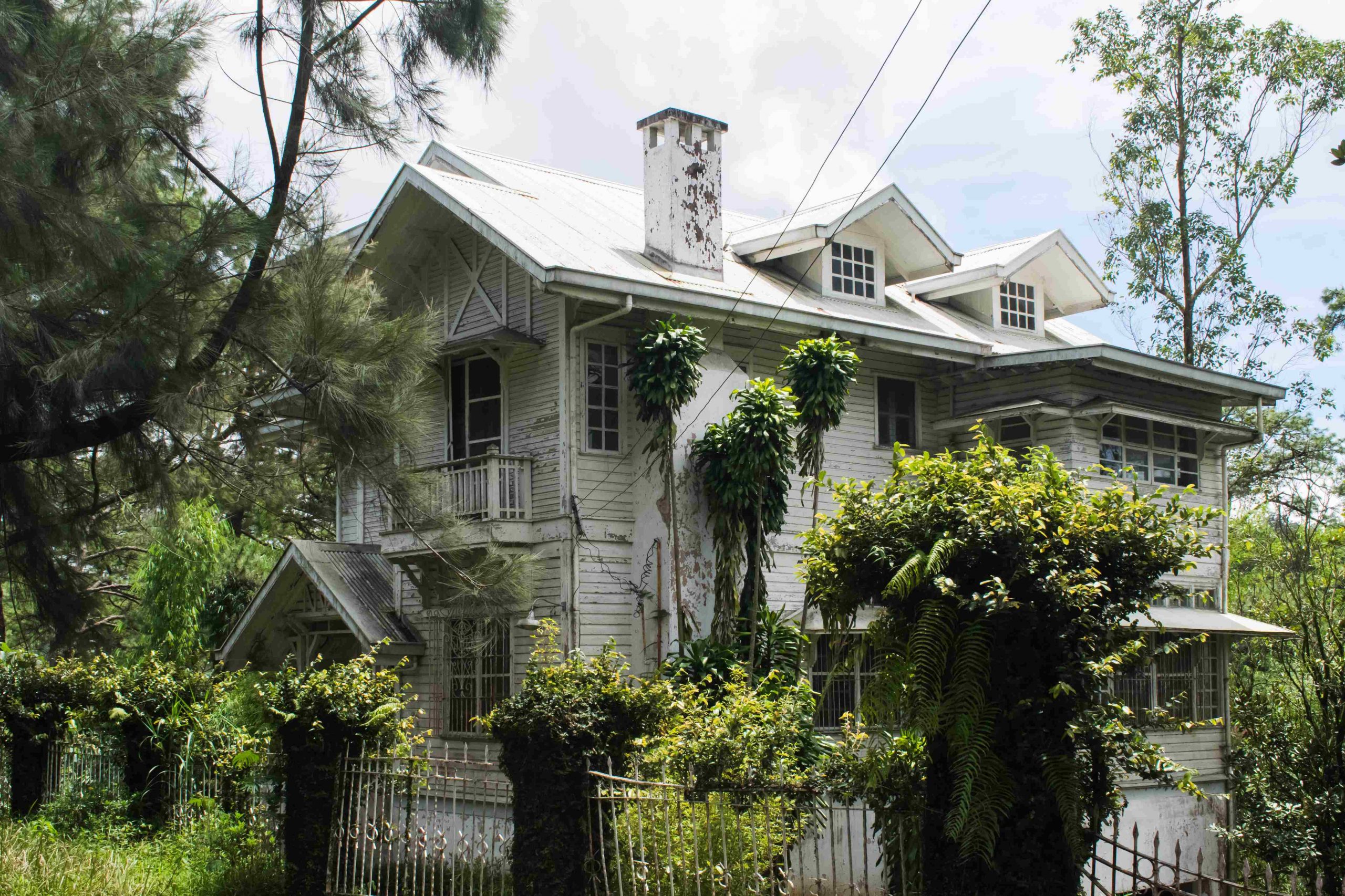In Yorktown, Va., a charming, gambrel-roofed house drew James Fiorito’s attention this summer. He had just sold his home and sought a fixer-upper—this one, listed at $250,000, seemed like a steal in a neighborhood where such a home would typically draw $450,000. He toured the dingy interior with a flashlight, since it no longer had electricity. In the backyard, a backhoe sat by the recently filled-in pool.
Fiorito, a 44-year-old attorney, puzzled over the home’s decrepit status and why the seller was the nonprofit Habitat for Humanity. He asked one of the listing agents about the home’s circumstances and was told the previous owner had been a hoarder. Fiorito made an all-cash offer of $225,000.
Later, he couldn’t resist googling the address. He learned that a man had killed his mother and sister in the home and stored their bodies in the empty backyard pool.
He decided to withdraw his offer. “I think it’s the proximity to evil and the reminder that there are terrible things in the world,” he says of the decision.
The home eventually sold for $285,100, according to Redfin.
Homes where a murder or other violent crime took place pose a conundrum for both buyers and sellers. Many buyers balk at purchasing these homes, feeling that living in them might be unsettling. For their part, victims’ families may not want to live in the house after an agonizing loss, but they need to access the funds it represents. If the home is unsalable, their losses increase and prevent them from moving forward to find a semblance of peace.
How much a death or crime impacts a home’s sale price depends on its notoriety, says Deanne Rymarowicz, associate counsel for the National Association of Realtors. “If it was violent and the police were called and it appeared in the newspapers, it could affect the value.”
But in today’s environment, when many real-estate markets across the country are facing record-low levels of inventory, these stigmatized homes may be easier to sell than normal, says Gilroy, Calif., real-estate agent Luba Kharchenko. When inventory is low, she says, “there will be a buyer who would not care about a stigmatized situation of the house, and will buy it and take advantage of a discount.”
In three states, rules guide disclosures about deaths that have taken place in a home for sale. In California, any death that took place in the home within the last three years must be disclosed to a potential buyer, and if a buyer specifically asks, any known death, no matter how old, must be disclosed. In South Dakota, real-estate licensees who are aware of a murder or suicide on the property must disclose if it occurred within one year of the first showing to the buyer. And in Alaska, sellers of residential real property must disclose a murder or suicide that occurred on the property within the last three years.
Nevada has an interesting crinkle. “You don’t have to disclose a death unless a defect in the property caused the death,” says Rymarowicz, “like if a staircase collapsed and the person died.”
Buyers concerned about this issue should make sure to ask specific questions, she says. While most states don’t require disclosure of death on the property, the situation shifts when an agent is asked directly. “Now you’re talking general fraud and deceit,” she says. Agents can sidestep the question by responding that they aren’t required to answer, and a buyer could interpret that as a “yes” and do their own homework.
Massachusetts attorney William E. Heney, who has represented the sellers of several stigmatized properties, says that when he represents buyers, his office always adds language to the contract asking the seller to represent that no murders, suicides or felonies occurred on the property.
Although Virginia has no disclosure requirement regarding deaths at a property, Fiorito says he feels the agent had a moral obligation to tell him about the Yorktown murders in response to his questions.
“How precise of a question do I have to ask?” he muses. “‘Did you find radioactive material in the backyard? Is this a cyanide dump site?’ ”
He says in his opinion, homeowner’s insurance policies should cover the loss in value if someone dies on the property.
Attempts to reach the listing agents were unsuccessful. Habitat had worked with Catholic Charities to acquire the house, according to Janet V. Green, CEO of Habitat for Humanity Peninsula and Greater Williamsburg, who said in an email that the group sold the house because it was too large for a Habitat family to purchase. She declined to answer further questions.
Kyle Lancour, the agent who represented the eventual buyer of the property, said he didn’t know about the murders at the time of the sale, and neither did his client, an investor.
“I don’t think it makes that much of a difference for this particular buyer,” says Lancour. “We buy drug houses, fire houses and places where bad things happened, and we turn them into something beautiful and livable. We bring them back to life again.” And in fact, since this interview, the home sold again in September for $491,000, according to Lancour. He says the buyer was made aware of the murders before going into contract, although an official disclosure wasn’t made.
When a murder takes place in a home, it can potentially impact property values throughout the neighborhood.
In 2009, a woman was stabbed to death in her El Dorado Hills, Calif., home by her daughter and the daughter’s boyfriend. Mindy Takeuchi lived with her family in a house on the same cul-de-sac at the time.
“When I first heard about everything, I was really scared,” says Takeuchi. “I couldn’t believe something like that could happen while we were home asleep.” However, she wasn’t compelled to leave. “If they didn’t catch who did it, I would have been worried. If it was a random act, I wouldn’t want to stay.”
The home where the murder took place was used as a rental after the crime, Takeuchi said. In 2019 it was listed at $869,000, and sold in 2020 for $795,000, according to Zillow. The buyer’s agent, Josh Martin, said neither he nor his clients were made aware of the murder, and declined to answer follow-up questions. Attempts to reach the buyer, seller and seller’s agent were unsuccessful.
Although there are two books and a “48 Hours” episode about the tragedy, not much notoriety surrounds the home. Nonetheless, local real-estate agent Lynn Putman says the tragedy affected the value of the house, although it isn’t clear exactly how much. She surmises that some people won’t bid on a stigmatized home and therefore less competition keeps prices lower. “That event will always be with the house,” she says.
As for Takeuchi’s home, although the family bought it for $900,000 in 2007—at the height of the mid-2000s real estate boom—they listed it for $799,000 in 2013, when her husband’s job took them out of state. They lowered the price four times over three months, and the home sold for $710,000, according to property records. “I don’t think the murder affected the value,” Takeuchi says. “We sold at a bad time. The market was going down.”
Putman, who showed a house next door to the murder house in 2013, has a different take. “We were coming out of the recession and by 2012 things were turning around,” she says, “but I do think having the murder there was somewhat of a damper. It just kind of had the stigma.”
While real-estate agents may not be required to disclose a home’s violent history, the buyers may find out eventually.
Maria Bruhns lives in Gilroy, Calif., where in 2011 a man strangled his wife and then shot himself in a home near Sunrise Park. About a year after the murder, the house was listed for $579,000, and quickly sold for $555,000, according to Zillow. “One day at the park,” says Bruhns, “lots of moms were sitting around talking while kids played, and one mom who had just moved to the neighborhood was talking about the incredible deal they got on this amazing house—so undermarket, and they didn’t get in a bidding war. Everybody was super quiet and uncomfortable. Nobody wanted to be the one to tell her what had happened there.”
The owners of the house at the time were Realtor Ann Sorger and her husband, who had to sign a disclosure acknowledging that they knew about the murder-suicide. “It was empty and the motivation was to sell it,” Sorger says.
Sorger says they bought the house for their adult daughter, who was the person involved in the conversation at the park. Sorger says she believes her daughter knew about the home’s history, but declined to answer further questions. Her daughter couldn’t be reached for comment.
Sorger sold the house in 2015 for $785,000, just above the asking price. The home has since changed hands again.
When selling a stigmatized house, it can be helpful to renovate heavily. Just as Lancour’s client did in Yorktown, the so-called Los Feliz Murder Mansion in Los Angeles is in the process of being rebuilt, according to Ephi Zlotnitsky, managing partner of the investors group that paid $2.35 million for it in 2020.
In the Los Feliz house in 1959, a doctor killed his wife with a hammer and then turned the weapon on his daughter, who survived, before taking his own life. The home was then left with all belongings intact for several decades, fueling morbid interest.
Zlotnitsky’s group listed the house in July 2022 for $5.5 million but delisted it in January 2023. Due to a proposed L.A. Wildlife Ordinance that could limit the size of future homes in the area, Zlotnitsky says, they decided to extensively renovate the home and put it back on the market.
“We recognized that this represented an insane opportunity to build a property that will never be able to be built again [after the ordinance is established],” says Zlotnitsky. He believes the enlarged property could bring “north of $17 million” when they complete construction and list again in about a year.
Another option is to embrace the history. The Lizzie Borden House in Fall River, Mass., home to an infamous 1892 double murder, is a thriving tourism site. Visitors can tour the furnished home, ghost hunt, and even spend the night. The home sold in 2021 for $1.8 million; it had last sold in 2004 for $600,000.
For some of these homes, however, the only answer is to tear it down. That was the case for arguably the most well-known murder home in the U.S., where actress Sharon Tate, Jay Sebring, Abigail Folger, Wojciech Frykowski, and Steven Parent were murdered by Manson Family cult members in 1969. The Los Angeles house was demolished, and in 1996, the owner built a new home on the site and changed the address to circumvent looky-loos. Over the last several years, it has been listed for rent and for sale, with multiple price changes and listing removals. It is now for sale asking $49.5 million, according to Zillow.



